26
Oct
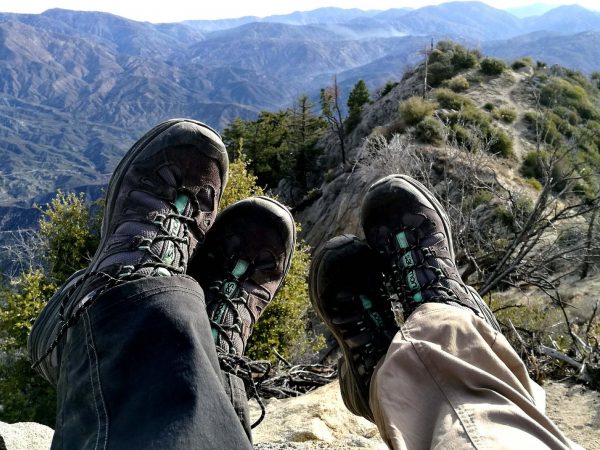
The weight on your feet significantly impacts your energy expenditure while hiking. Studies have shown that hiking with additional weight on your feet requires more energy than carrying that same amount of extra weight on your back. Let’s not forget possible future injuries, existing ones and the additional damage from the load if you already suffer from certain conditions like osteoarthritis.
The spectrum of options for hiking footwear can be overwhelming and it’s normal to feel like you can’t tell what’s the difference between hiking shoes and boots. Even so, it comes down to 3 fundamental factors: weight, durability and ankle protection or stability.
If you’re hiking in the summer, and the terrain isn’t too extreme, hiking shoes are great due to their breathability and light weight. However, the ankle support is just not there, so if you’re thinking of climbing steeper heights, hiking boots are the right choice. If you’re still unsure of their characteristics, talk to a sales representative at a well-stocked outdoor camping store.

A properly equipped outdoor camping store offers all types of hiking footwear that any lover of higher altitudes and bigger challenges could ever dream of.
The purpose of a full leather upper is the durability and comfort required for mountaineering and heavy backpacking. Every dedicated bushwalker deserves a tough, durable boot with a rubber toe rand and a D-ring lace-lock that allows independent fit in the lower and upper portions of the boot.
Moreover, some leather hiking boots are crampon compatible, making them great for mountaineering as well. When looking for premium leather, visit an outdoor camping store equipped with Perwanger leather. However, a pair of this kind of shoes can weigh almost 2 kg hence they’re intended for serious and devoted hikers.
The Perwanger Nepal leather was developed to meet the highest demands for water resistance, breathability, robustness and comfort of the world of high-tech footwear. Perwanger leathers, similar to nubuck, are a special brand of high grade, brushed full-grain leather. It comes mainly from high-quality cattle from the alpine region.
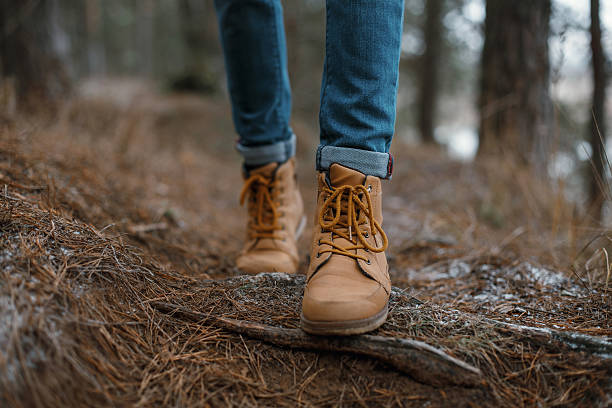
Its robustness has allowed for rubber rands to be applied to the boot hence achieving a fully waterproof connection of the sole to the shoe. Perwanger leather becomes naturally ‘hydrophobic’ or water-repellent, not by adding a protective coating to the surface but through the use of special molecules in the tanning process. Last but not least, OEKO-TEX® has awarded Perwanger leathers a seal of quality meaning that it’s free from harmful substances. Also, it’s scratch-resistant. In addition to its exceptional technical properties, a wide range of particularly intense and vibrant colours of Perwanger leather are available.
When it comes to durability, we might not be able to tell you how long should hiking boots last in hours but rest assured, they’re built to last for thousands of miles. Bear in mind that an upper made from leather is superior to a combination of fabric, leather, and/or mesh.
If you need lightweight boots for conditions that won’t be so harsh, the shop assistant at your nearest outdoor store for nubuck. Weighing less than 1000 g, soft nubuck combined with the calfskin guarantee quality. An additional ultralight Vibram outsole and cushioned PU midsole might be added to premium models, providing excellent shock absorbency. Hence, they are functional as they are luxurious.
The leather’s outside has to be sanded. The nubuck is more expensive than suede because the outer layer of calfskin is more hardwearing than the inner part used for the suede and therefore stronger and more durable. Because the nubuck is sanded from the outside, there may be some apparent natural imperfections of the leather. Some, on the other hand, find that the charm and character of nubuck lie in those same “flaws”.
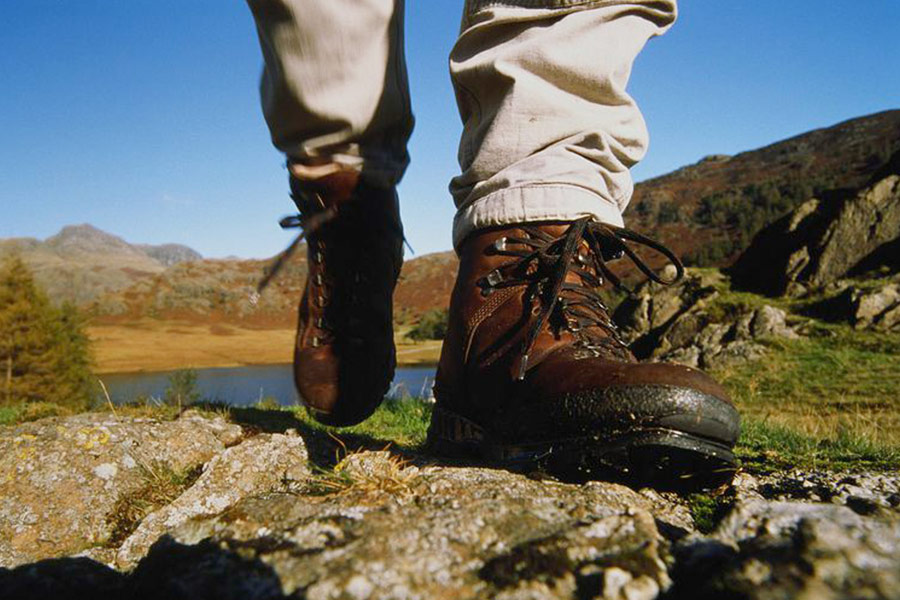
Wide fit, waterproof and breathable Gore-Tex boots are ideal for fast bushwalking and excursions with light loads. This mid-cut hiking shoe can be worn for many consecutive hours, in almost any type of terrain.
There are Gore-Tex boots with an extended comfort membrane and a soft comfort collar that protects the ankle from the entry of stones or mud. You can find a pair with an upper made of abrasion-resistant and breathable mesh fabric while the rear has a stabilizing heel that allows full and accurate control over the traverses.
Moreover, an impact brake system and a trail bite heel for better downhill braking make these shoes great to go trail running with. They also have shock-absorbing injection and an anti-shock rubber toe. Compared to leather boots, these will weigh a little under a kilo.
Invented in 1969, Gore-Tex is actually made from Teflon, the same material used to make your best pan. What’s so special about Gore-Tex is that it’s actually a sandwich of three layers, with two outer layers of nylon and the Teflon in the middle.
Gore-Tex works like a one-way valve, repelling liquid water while allowing water vapour to pass through. Also, it’s a lightweight and waterproof fabric, thanks to the slippery nature of Teflon and thus intended for all-weather use.
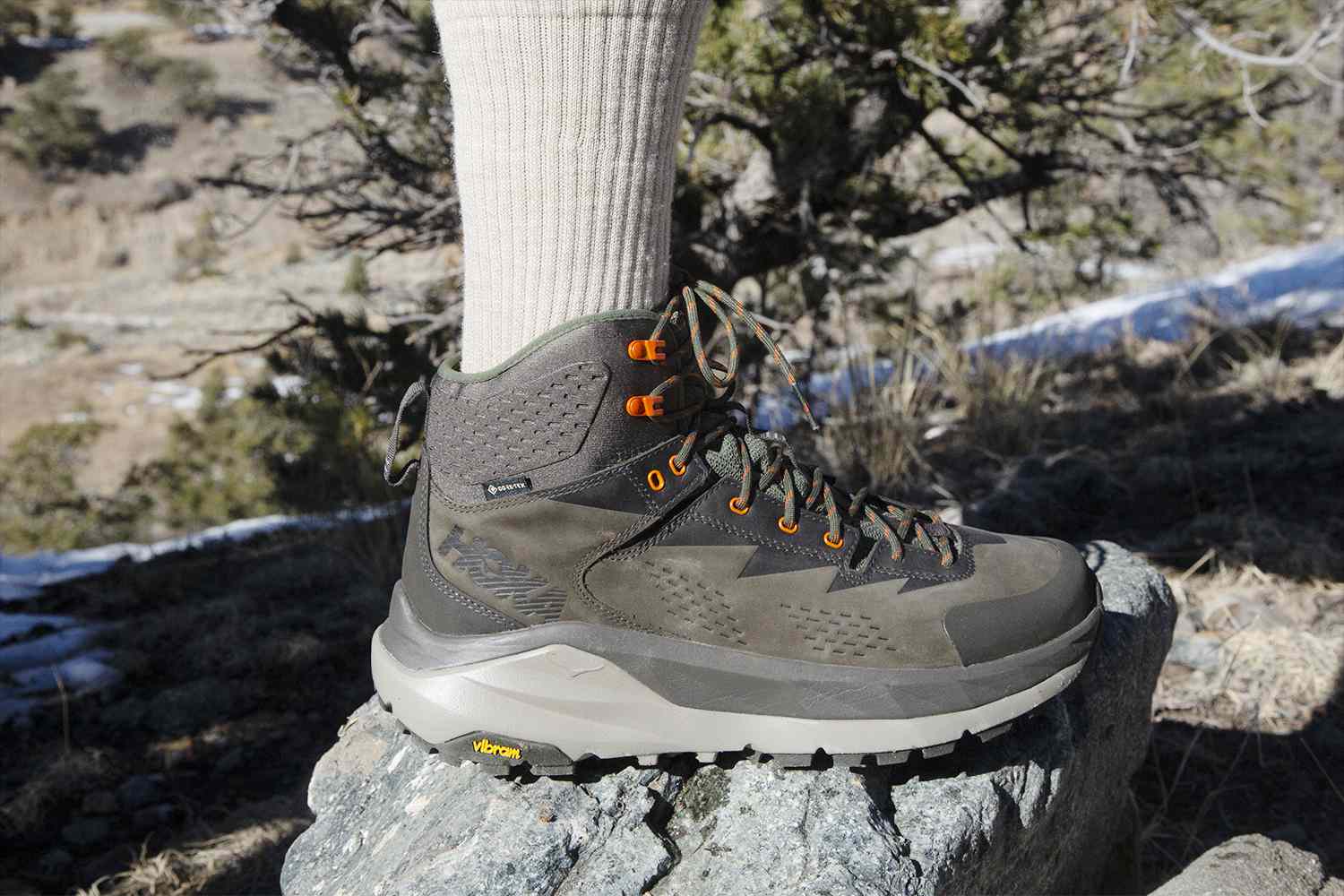
If you want an every day, around the world hiking shoe, choose suede leather. Contrary to nubuck, suede is made by the inner layer of calfskin or other animal skins. The result is a naturally smoother and cleaner product than the nubuck. However, this also implies that it’s not as resistant.
It’s a common belief that suede will get damaged if it gets wet. Although exposing suede to a lot of water is not recommended, your suede shoes won’t get ruined if wet. You should however avoid using them on extremely rainy days, just to preserve their lifespan.
Softness aside, suede shoes are not just superficial beauties. Premium models include add ons like a protective toe cap, cushioning heel foam and a contagrip sole. Contagrip soles have zones of different densities and compounds, depending on their placement. For example, high-density compounds are placed in areas prone to wearing out.
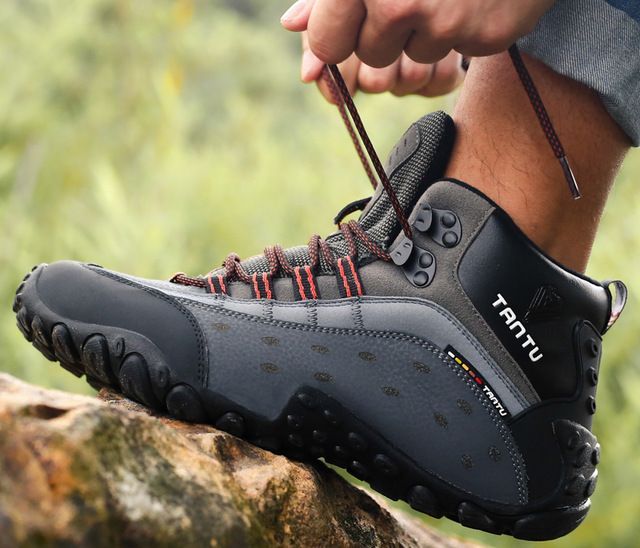
Waterproof shoes are designed to be simultaneously very lightweight and durable. The upper of waterproof shoes can be made out of ballistic polyester and high-quality suede that are scratch and abrasion-resistant. A thin Tri Aria lining, made with breathable mesh technology and a high denier upper, will create a waterproof barrier that allows breathability.
Hiking waterproof shoes with unique webbing lace loops add support and stability. A phylon midsole, Vibram sole and heel cradle support system provide the optimal cushioning for every impact.
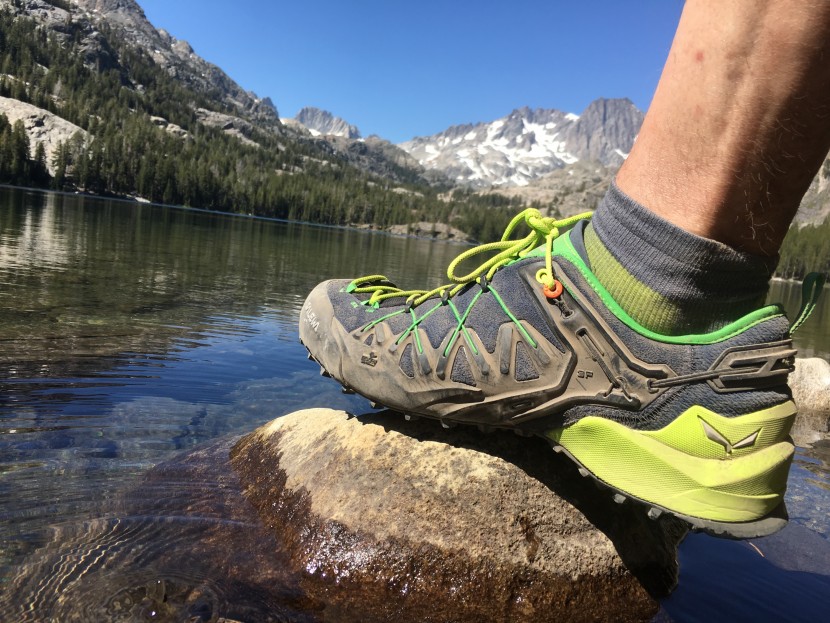
Lightweight shoes are designed to be adventure running shoes while also being light, durable and stable on the most demanding trails. Although their quick-dry mesh upper is less resistant than other hiking shoes, their sole makes up with its contra grip mechanism, balancing out your losses and gains. Also, the mesh lets the water out while it keeps the debris away.